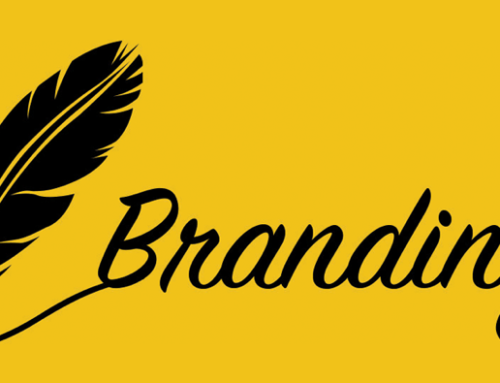[Ed: Kirsten Wright had a strong reaction to my recent post on MycroBurst. Since I respect her opinion, I invited her to guest post on WUL as to why she doesn’t think crowdsourcing is the way to go. Here you have it.]
To start, what is spec work?
- Traditional spec work. This is usually done by new designers to get themselves experience and using “free” to outbid any other designers.
- Crowd-sourcing: This is the type that fits sites like 99 designs and MycroBurst. This is the type of work that we’re talking about.
So let’s talk about exactly what happens when a project gets crowdsourced:
- The company is looking for a designer for web or print work.
- They are unsure where to go to find a solid designer or a designer that they can hire for the price they want.
- They go to the site like the ones mentioned above. They choose the price point for the project, explain what they’re looking for and then let the work come to them.
- Once the work starts coming in, they review what they think, add suggestions, and then finally pick a winner and reward the prize money to that person. No one else who participated get any money.
How crowdsourcing works is pretty simple, but the opinions on it are extremely different.
From a business owner’s standpoint, crowdsourcing is a great way to get a project done at a lower price point.
It also eliminates the need to hunt for designers, ask for referrals, or even meet with multiple people. Which means you don’t run the risk of hiring somebody and then not being happy with their work.
It’s extremely easy to understand why a business owner would want to use a crowdsourcing site.
From a designer’s standpoint, crowdsourcing feels like you’re sitting behind a restaurant begging for leftovers.
The biggest issue with crowdsourcing for a designer is that the small guys can’t compete. If you’re a one-man shop, you can’t spend your time doing work that you’re not getting paid for.
If you actually look at the most successful designers on crowdsourcing sites they tend to be either large companies or off-shore companies. They do well in crowdsourcing because they have cheaper labor and more people who can submit work. This completely devalues the work, the time, and the training that goes into being a really good designer.
A few other brilliant minds have shared thoughts on it too:
Let’s take a hypothetical scenario. You are on the hunt for a logo for your website and I give you two options:
- You can have 50 samples of your logo created, pick one and pay the creator $1,000. However, you can’t meet with them face-to-face, you can’t actually get to know them, and they won’t take the time to really get to know your business or clients; or
- You can hire one individual and work one on one with them to develop your logo. You get to have multiple conversations (even potentially meet in person), you can ask for recommendations, see their past work and they will get to know you and your business. They give you one finalized design after going through multiple rounds of revisions and you pay them $10,000.
Which are you more likely to choose? While a small group of people will understand the value of working with a designer one-on-one, most people would choose option 1… and this is exactly why crowdsourcing sites do so well.
For those of you who are still a little confused because we’ve been talking about it from only the design standpoint, let’s take crowdsourcing to the “real world”:
- I have five holes in my roof, so I need to hire a roofer to come fix them. I get five different roofers and each one fixes one of the holes in my roof. Then the end, I only pay one of them for the work that they did. Is this acceptable?
- I go to a gourmet restaurant, and I ordered five meals. I take a couple bites of each meal until I’m full. I thank the chef, but I only pay for the one meal I like the best. Is this acceptable?
- I need financial advice. So I meet with five financial advisors and each one gives me their advice. I pay the one that gave me the best advice, the rest walk away empty-handed. Is this acceptable?
Obviously, my point is that none of these situations are acceptable, and yet for some reason companies hiring designers think that crowdsourcing this industry is perfectly fine.
We all want to get the best work for a price that we think is “fair” but if it takes devaluing someone’s work to get the price that you want, how fair is that?
I get why this would have been great 50 years ago. It was hard back then to reach out to the people you knew to get referrals. You really only had the people close to you.
However now, all you have to do is turn to your followers, your fans, or anyone in your social connections and ask for a referral. I guarantee you, you’ll get more than a dozen suggestions, in all price ranges, for a phenomenal designer.
Moral of the story: You need to treat a designer as you would any other provider: Ask questions, spend some time determining the best person for the job, and hire them.
What do you think?
 Kirsten Wright runs a successful web design and social strategy firm, Wright Creativity. Her business is dedicated to taking the small business to the next level through individualized strategies, custom designs and a complete understanding of communication marketing. In her free time, she lives in South OC with her hubby, enjoys good food and wine, and loves taking their greyhound, Badger, for runs.
Kirsten Wright runs a successful web design and social strategy firm, Wright Creativity. Her business is dedicated to taking the small business to the next level through individualized strategies, custom designs and a complete understanding of communication marketing. In her free time, she lives in South OC with her hubby, enjoys good food and wine, and loves taking their greyhound, Badger, for runs.










[…] Apart from Kirsten Wright, Adam also responded on Twitter to my original MycroBurst post. Here is his guest […]
@JoeWitte @codatory There is always someone willing to go broke faster than you are or work for less than you will.
@JoeWitte Thank you so much for joining in on the debate! I am appreciative of your perspective.
I 100% understand how it works and why. As I explained in my post, it makes sense from the business standpoint which is why it survives. If no one participated, it wouldn’t work. I don’t disagree at all.
But your first key point of “it’s hard to convince a small business owner that their is a better solution for $300, where they can get 80+ concepts… in a week.” is exactly the issue. There IS a better solution! The biggest problem that happens is these small businesses start to grow, but rather than have their marketing grow with them, they think “well, a $300 logo worked, why not do the same for a website?” But then there is no cohesion between the logo, the brand that is developing and the website because the person developing doesn’t understand the budding brand. Then, they grow some more…now they need something else. And that piece is again created by another designer, without any thought to prior pieces or a strategic brand! It turns into one big pile of marketing that has no backbone behind it. And finally, the marketing starts to fail, and the business that has been growing, stops, because they have no way to compete with the other businesses in their arena who have actually dedicated funding to marketing.
For the second remark, I understand the global community perfectly fine. The problem is, we’re in the States. And so is your business. If you want to focus on the global design community, then create a site for them, because the U.S. designers just can’t compete at the same price point. It’s like letting a cheetah race against a kitten. It’s just not a fair fight.
On your third point, I understand a startup business as much as anyone. I AM a startup. I was laid off from my corporate job 2 years ago and started my own business with nothing. While I could do my own design, there is a lot I couldn’t do… But rather than try and get by with “cheaper” help, I invested in myself, got good legal representation for my contracts, have a great accountant and use my money wisely in investments that will bring a return for me. Skimping on your marketing is never the solution if you really want to grow.
Finally, no industry is perfect, yet the design community is one of the few that believes crowdsourcing is acceptable. Why is that?
Simply put, the problem is always going to be the designer vs the business model. And in the crowdsourcing world, the designer loses.
@adamleedesign Actually, as a co-founder of MycroBurst, we crowdsource all the time, and are thrilled with the results. We also had a chance to compare MycroBurst’s results for a Big 10 logo, that they sourced to a “high level” design shop, which was terrible. Check here… http://blog.mycroburst.com/unofficial-big-ten-logo-contest-cast-your-vote-now/
Where was the thinking brand consultant for them? How much did that thought cost?
@JoeWitte @HowieSPM Why should I get out of the US designer mindset? I am a US designer. Of course $100 would be great for certain people living in certain countries. It’s obviously not for someone living in the US.
@JoeWitte No, I am absolutely not. A designer IS a thinking brand consultant. If that’s not what you’re getting from your designer then you’re probably crowdsourcing, and that’s the problem.
@adamleedesign @HowieSPM Adam, you have to get out of the US professional designer mindset. There are 6 billion people in this world, only 350mm are in the US. check out this video– http://www.youtube.com/watch?v=PHmwZ96_Gos&feature=related – it gives great insight to the global market. In the end, it’s about supply and demand. Then youwill understand that $100 sounds VERY appealing to someone in everyplace other than the US and Western Europe.
@adamleedesign I’m going to guess Adam, that what you are talking about isnt’ really hiring a designer, but hiring a “thinking” branding consultant, who happens to know design, right? Yes, that’s the ideal situation. But, what if someone just needs a logo for their business card or their “joe plumber’ truck, and they are on a tight budget? Should they do nothing? of course not! Look professional, grow your business, then when it makes sense, get some professional consultation.
@KirstenWright @codatory What you need to keep in mind are 2 things: 1) if enough designers dont get paid, this model wont work. 2) Do designers, in our current model, get paid for prospecting/marketing/advertising/pitching/proposals/free comps/billing/accounting?? No, it’s a part of doing business. So, if a designer wants to skip all that- they can just design.
Good article Kiristen, but here are some major points why crowdsourced design A) works B) is here to stay… First, it’s a marketplace. We dont force anyone to participate as a designer, and we don’t force any project holders to launch contests— but our conversions have tripled from our previous model. Why? Because it works, plain and simple. Is it perfect? No, but i have yet to see a perfect business, and it will get better. But, it’s hard to convince a small business owner that their is a better solution for $300, where they can get 80+ concepts… in a week.
Second, I believe many people underestimate the global design community and the amount they can earn in this model. India and China have a combined 2 billion+ people. I’m not sure how many are designers, but i bet there’s a lot. That’s just 2 countries. Individuals in those markets need to earn around $300 to make GOOD salary. Our top designers earn more than $2k per month, regularly. we get emails all the time how we are changing their life. Even better for a designer, all they have to do is design… they dont have to find clients, pitch them, bill them, argue over revisions, just pick a project and design. This is extremely powerful.
Third, you also have to understand the mentality of the start up business. MOST small businesses don’t get seed money, or VC. They leverage their credit card, or try to get started with a few thousands dollars. Therefore, getting a professional logo, AND some decent collateral for around $1000 is a great solution. Having someone conduct “market research” for an additional $4000 is unneccessary at their stage of the game, and unaffordable. But here’s the kicker, major enterprises are entering the space also. Why? Because it’s efficient and yields excellent results.
Fourth, if the previous design process was perfect, we wouldn’t be having this conversation. The reality of the previous design process, is that it’s slow, and inefficient. And probably about 30% of the projects lead to either the project holder being unhappy with what they received, and having to pay top dollar for it and live with it, or the designer having to give more comps and not get paid for it. Either way, it’s not perfect. And on top fo that, it takes weeks and weeks to get something completed.
Finally, i can’t speak for our competitors, but, i believe this is the first phase of the crowdsourcing model. We are fully aware of the frustration of the design community, and we WANT to expand the net to get more top designers involved. It’s a new model, it will adapt and improve. In the end, as i stated in my article, value will be placed on creative minds, and strategic thinkers.
Thanks for the healthy debate… we hope you try out #MycroBurst and see for yourself how this is so effective.
@KirstenWright If those were the conditions, yes. I’m not desperate enough for work to go to that kind of job.
Instead in IT it’s more along the lines of being an OnForce contractor or going out and finding work myself. For some people it’s worth it to take a loss on controlling price and scheduling to not have to handle marketing.
Is it frustrating? Yes. Is it prevalent in other industries? Yes. Is it going away anytime soon? No, because it provides legitimate business value to the clients. And it clearly provides some value to the designers who choose to participate.
@artemidiastudio Ahhh “branding”, that magical word that so few understand. That is truly the root of the issue…you can’t crowd source a strategy, or a real brand!
@Dennis Goris Dennis, great perspective on the time waste. Definitely another big downfall of crowdsourcing!
Exactly! Thanks for sharing your experience too! @ShakirahDawud
@codatory What devalues it isn’t the price…it’s the asking a group of people to work for free, just to get one design you pay for.
For example, say someone got you, and 10 other IT pro’s in the room. Each of you did the job they needed done, but they only paid the one who did the best. The rest of you walked away empty handed. Is that fair?
Great read! I completely agree. I recently had to explain the pitfalls of crowd sourcing to a potential client. They were a new restaurant so the food ordering would have been a great example! Pressing further, I asked what they would do for the rest of their collateral, menus, website, ongoing promotional marketing. Would they crowd source that too and have a mish mash of messaging with no branding? “What’s branding?” ((sigh)) It turned into a very fruitful conversation, however, so many business owners have no idea how to market themselves. A good designer is of great value once they understand they need ongoing support to maintain their business.
We like contests.
We are taught from a very early age to place little value on creative work. Because it’s “fun” and “anyone can do it.” Contests are common in schools where kids learn that creative work (like music and art) is secondary to “academics.” Many professional design organizations reject contests as unethical. I dislike them, but for different reasons. My problem with contests is that they are a colossal waste of resources. Imagine that an organization decides they need a logo, so they launch a 60-day contest. Suppose they get 100 entries, with each requiring an average expenditure of 20 hours of design time. That’s a total of 2,000 hours — almost a year of labor. That means that after picking a “winner”, the other 1,980 hours (of the community’s pool of pro-bono time) has been wasted. Simply in the interest of giving someone a choice.
@KirstenWright It’s not that I said the work had no value, that’s like saying a Ferrari has no value. But just because you can go out and buy just a phenomenal vehicle for $200,000 doesn’t mean that’s an appropriate choice for everyone.
And the fact that you can buy a SMART for $10,000 doesn’t have any impact on the value of the Ferrari.
@codatory $10,000 for a logo (which also means a brand analysis, comprehensive research into your company and creating a logo/brand that actually MEANS something) is actually very reasonable for an average size company. Coke or Pepsi would expect closer to $50-$100K.
As far as “no tangible value” on a logo, try stealing someone’s, making some mods on it and repurposing it as your own. Trust me…there will be a value placed on it.
The numbers were just examples to show the differentiation, I could have easily used $100 vs $1000, the point is sites like these devalue the work that a designer puts into the development of something.
The other point “young designers practice and grab cash”? Young designers can’t afford to spend time doing work for free…trust me, I have been there. The likelihood of a “young designer” winning these is slim to none, and is an irresponsible way to “get experience”.
Very much my own thoughts on this, Kristen. I’ve tried crowdSPRING. I’ve not found it worth my time, although obviously it’s worth someone’. I’ve noticed a lot of offshore professionals participating in the projects I bid on, too, and I think this business model may be ideal for them (at least, when and if they win, which speaks to your point about the process itself), but not for me.
Sounds to me like your saying “good” designers are the ones that charge $10,000 for a logo. Sure, Coke, Pepsi and other Fortune 500’s won’t bat an eye at that kind of money for something as important as a design, and they’ll continue to go the agency route because they’re huge and have lots of needs.
On the other side, there are companies that don’t even turn $10,000 a year in revenue. They can’t afford a $10,000 logo and their banker would laugh them out of the room trying to take a loan out for it – after all the logo has no tangible value. They don’t have time to research design firms and spend hours and hours talking about what the logo should mean and represent.
This is the same stuff that’s plagued other fields for ages. As an IT Professional I can tell you that I face competition from many angles including nearly-free services from off-share companies and high-school students. At the end of the day, I am able to just shrug off that work because I know that there is still plenty of a population that understands the value of a real professional and not someone who’s just out to make a quick buck. But I also have to adjust my pricing for the client. If we can’t reach an agreement we can’t work together and I’m glad there are options out there for them.
Sure, in an ideal world people would have no other option than to spend tens of thousands on everything. And they’d have it to spend. But life is about dealing with constraints. Your clients aren’t the ones going to 99designs or anywhere else. They’re the ones that understand the value in what you provide and that’s great. But for every good client there are 100 or more bad ones that may well just go to 99designs and let some young designers get the practice and maybe some cash.
@HowieSPM @adamleedesign I think the key here is in the VALUE of what is being done. The NASA example is interesting, thanks for sharing Howie, and in that case, I would again say what NASA did was wrong. They should have at least rewarded those who put in the time and effort to propose something of that scale, even if they weren’t chosen. Everyone’s time is worth something!
@adamleedesign You’re welcome for the inclusion – and you’re correct as well about how the business can suffer. I could have written another 5 or 6 paragraphs on that, but I figured this was enough :)
@adamleedesignI agree Adam with your response. I was just making up a scenario with fictitious pricing but also depends on the biz size. Small business can’t afford 40 hrs for a logo but you get what you pay for.
@HowieSPM Your scenario of paying 10 designers could potentially work if the dollar amounts were higher. I can’t imagine a good designer doing a logo for $100 or even the chance at $600. A logo is going to take a minimum of 40 hours so those dollar amounts just wouldn’t work for a professional living in the U.S.
I think that as Kirsten says, find a designer based on a recommendation from someone you trust and build a relationship with that designer. You’ll end up with a better result in the end.
Great writeup Kirsten (and thanks for the link). It’s important for people to understand why this is bad for designers.
I also think it’s equally important for people to understand why this is not the best route to go for their business. Finding a designer or firm that will really partner with your business can make a huge difference. It shouldn’t be about saving a couple bucks on your logo, why not start a long-term relationship with someone that can become invested in your success and learn your business inside and out. It may start with a logo but it will move on to your website, collateral, etc.
Crowdsourcing isn’t just bad for designers, it’s bad for the businesses that use it.
I read both blog posts. First of all let me state crowd sourcing is as old as dirt in the Industrial B2B world. It has only recently come into the creative world per se. I will use a great example of thousands of people working on a crowd sourced project.
NASA wants to go to the moon and mars. They solicit bids that have specs. How much weight needs to be hauled, how many crew members etc. Then massive corporations assembled teams to big the project. They each had their engineers do the concepts. Then they had the engineers of their sub contractors do their support concepts. Thousands of people. No one gets a dime until the winner is chosen. $9billion dollars at stake (yes Mars and Moon 10 year program costs less than 1 month in Iraq).
I get both sides of the argument. I want to solicit best ideas. I put something to big. Ad Industry does this for accounts when Agencies pitch. It does not work if the reason is ‘I want cheapest’
Working with ELance to get some income was hard. I saw a lot of requests looking for hours and hours of work but offering less than $10 an hour. Someone wanted 50,000 dummy facebook accounts with real photos and friends set up (uhm can you guess why?) they wanted it in 30 days and wanted to pay $500.
After bidding many projects but knowing I wasn’t ‘cheapest’ I gave up. On the other side shouldn’t we be competing also on talent? What if I need a logo and if I go to someone I get only one idea person. But what if I don’t care about cheap and I want best. What if a Logo costs $150 for the work and I tell 10 graphic designers I will pay you $100 each but the winner get’s $500 because I want best and I am willing to pay. In that case doesn’t crowdsourcing make sense?
Well put, Kirsten. The examples of other fields doing their work for free really say it best. People have to learn there is value in design.
I have to say I agree with you. Part of my background is design and although I see both sides to the crowdsourcing debate, crowdsourcing makes me skin crawl. Thanks for highlighting the reasons why this hurts the design profession.